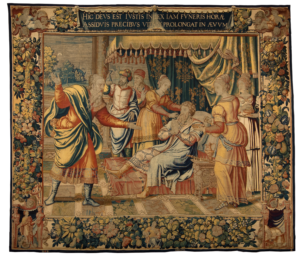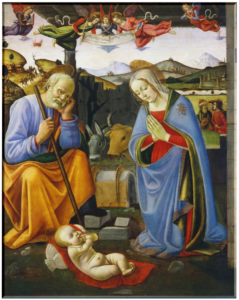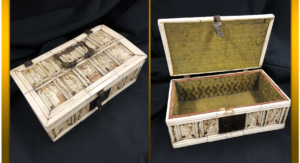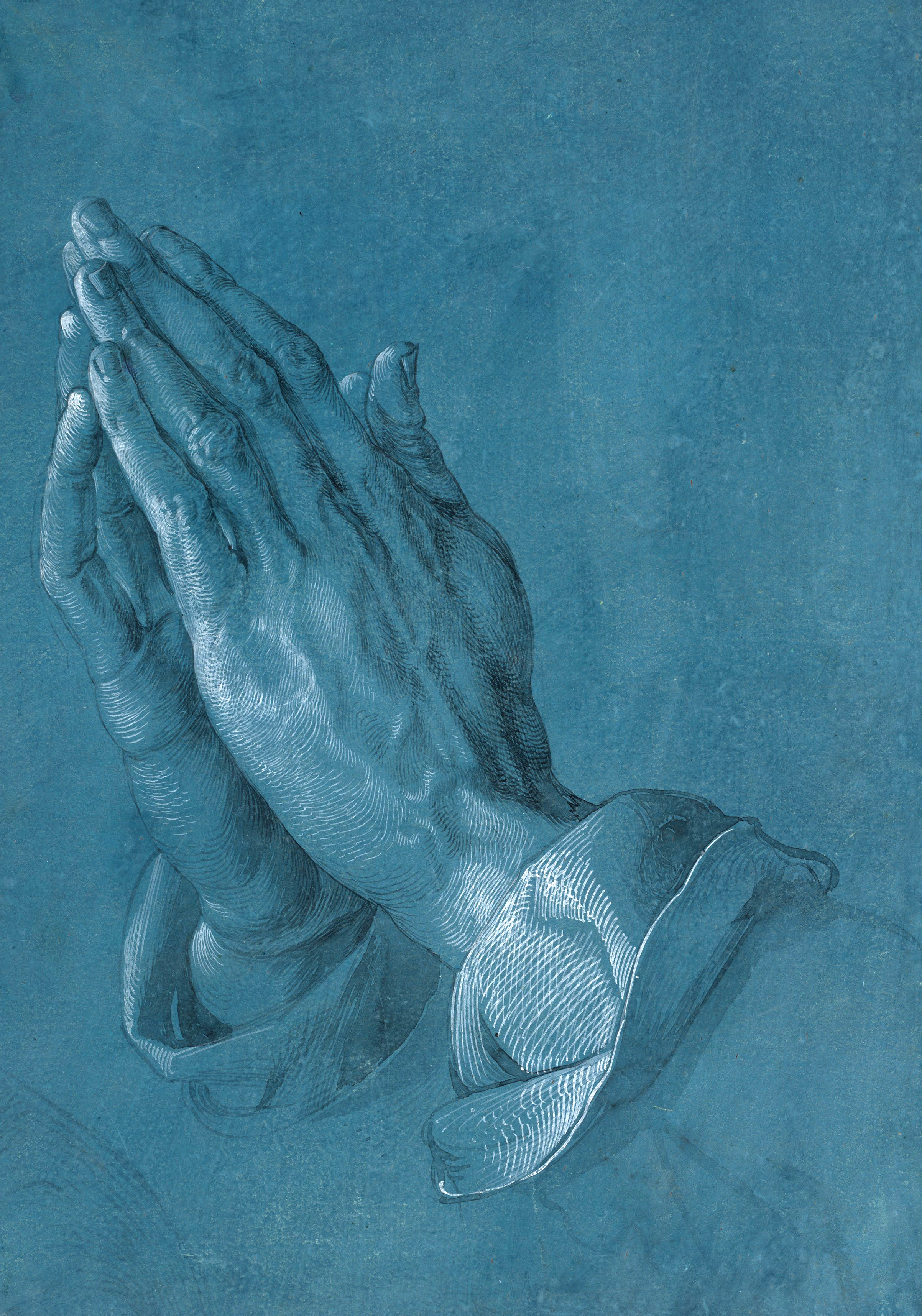The Last Supper was a common subject among 16th-century artists; however, the intriguing iconography in Stefano Cernotto’s rendering displays an inventiveness that is unique.
Tag Archives: 1500s
The historical and iconographic details in this early Spanish painting by Jaun de Flandes make it one of M&G’s most intriguing works.
In this triptych the artist beautifully pictures several of the most familiar Christmas story events.
Jan Gossaert, called Mabuse, was one of the first Netherlandish painters to integrate an Italian and Northern style. His beautiful Madonna of the Fireplace in one stunning example of his skill.
Marietta Robusti’s Allegory of Wisdom is an excellent example of how Renaissance artists used both Christian and mythological iconography to explore a theme.



